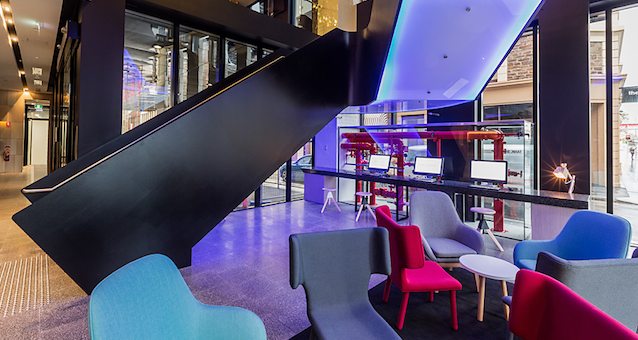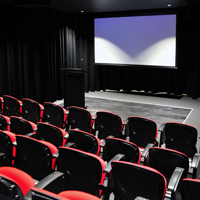Accor celebrates 20 years in Australia this month and in an exclusive interview with HM, the company’s Chairman and COO of Asia-Pacific, Michael Issenberg, looks back at the chain’s evolution in Australia and importantly, what’s next.
Michael, you’ve been with Accor for much of the 20 years, did you really expect the group to become such a dominant force – and so quickly?
I think people have got to remember what 1991 was like. If they think the GFC was bad, it was nothing compared to the early 1990s – at least for hoteliers. We were in the midst of the “recession we had to have”, interest and unemployment rates were crippling, airlines were collapsing, tourism had just been devastated by the pilot’s dispute, and then overseas the Iran-Iraq was keeping international travellers from flying. On top of that, there had been the largest hotel building boom on record, and with the dramatic increase in supply and sharp fall in demand, hotel companies were going into receivership or were unable to pay inflated guarantees to owners. So all in all, this wasn’t the perfect time to launch a new hotel, let alone a new hotel group. I was working for Mirvac Hotels at the time and I think we were all sceptical about Accor’s prospects, but then they continually won hotel management contracts, much to my frustration at the time. In retrospect though, the parlous times might have been the best of times to set up business in Australia, because the landscape was changing so rapidly.
What set Accor apart from the competition?
The fairly straightforward business model of concentrating on the mid and economy sectors was the key to Accor’s vision and it really did make sense, because every other international hotel group had concentrated almost exclusively on the top end of the market, leaving a vacuum in the middle. The top end of the market was also far more exposed to fluctuations in international travel, where as the domestic sector was a lot less volatile, and this is the area that Accor tapped into. Accor took over the ground previously held by Southern Pacific Hotels, but went much further by revolutionising the 3 and 2 star markets. That end of the market had been dominated by very inconsistent motel-style accommodation, and with the rise of the low-cost carriers came a new market that wanted quality economy and mid-market accommodation that brands like Ibis and Formule 1 satisfied.
Accor was well known for mid-market and economy hotel accommodation, but how much of a struggle was it to get recognition in the top end of the market?
You’ve got to remember that Sofitel represents just 120 hotels out of a global network of over 4000 Accor hotels, so it has always been a more niche part of our business. But it was important to launch Sofitel in Australia to show that Accor could genuinely cover the full spectrum of hotels. I think there was a lot of doubt about our 5-star credentials, but the Sofitels in Melbourne, Sydney and Brisbane have shown that we are just as effective in the luxury sector as we are in the rest of the business. The fact that Sofitel Wentworth was just voted best 5 Star/Premier Accommodation in the prestigious AAA (Accommodation Association of Australia) awards highlights that.
How much of a gamble were the Darling Harbour and Sydney Olympic Park projects? You put a lot of eggs in a few baskets?
Again thinking back to the 1990s, both Darling Harbour and Sydney Olympic Park were termed “white elephants”, but both have been long-term successes and helped regenerate these precincts. We knew that billions of dollars were going to be invested in the development of both precincts and that would generate significant long-term demand. We now have four hotels at Sydney Olympic Park – including a Pullman, western Sydney’s first 5-star hotel – and it has really contradicted those critics who questioned whether there would be a purpose to the Park after the Olympic Games ended. We always looked at the precinct as a rapidly growing business and events area, not just in terms of the Olympic Games.
How much has the industry changed in the past 20 years?
Dramatically. In the early 1990s, the American hotel groups had the highest profile, but they have remained fairly static over the past two decades, with Accor and the domestic chains making the greatest progress. That has been a result of the changed relationship between owners and managers, with a far more results-oriented approach that has suited a group like Accor. I’m proud that we have been able to exceed market share both in good and difficult times.
Accor took some time to embrace franchising, but now it is your biggest growth sector. How deliberate was that strategy?
With the increasing importance of distribution we were convinced the time was right to put more emphasis on franchising. There are now far more hotel owners who can see the value of branding and distribution in a tough market environment. We now have over 50 franchise contracts and I can see that doubling in the next five years.
As you say, new hotel projects seem to be very rare in Australia – do you see this changing soon?
There will be limited opportunities, the cost of land and hotel development is still prohibitive in most parts of Australia, and financial organisations are still sceptical about the value of tourism. The fact remains that rates are still not high enough to justify most investments, even in “hot” markets such as Sydney, Brisbane and Perth.
What are the most important innovations Accor has brought to the industry in Australia?
Quality in the economy and budget sectors is something we can be really proud of. The amount of innovation at these levels has been astonishing. The standard of facilities and services in our Ibis and Formule 1 hotels has forced the rest of the industry to upgrade their standards. There have also been major innovations in distribution, sales and marketing, with Accor’s pioneering of dynamic pricing benefiting the wider industry and ensuring that hotels maximise their revenues when demand justifies increased room rates. More recently we’ve pioneered the delivery of Optimum Service Standards for the China and India markets, recognising that these two markets are crucial for Australia’s inbound future.
What aspects of the industry in Australia do you believe can/should be improved?
It’s hard to compensate for factors such as a high Australian dollar and lingering economic instability internationally, but I think that we still suffer from an image problem in terms of what Australia has to offer the overseas visitor. Long-haul travel always suffers when economic circumstances are difficult and I think we really do need to concentrate more on Asia than Europe, the UK and America. Singapore does an outstanding job with its tourism, it anticipates trends, builds the infrastructure to cater for planned growth, has a clarity in its market offering, and then delivers the goods. I think we can learn a lot from what they do.
From a personal point of view, you built your hotel career in Australia but have now since moved to Singapore to head up the Asia Pacific operation. Do you have any thoughts of returning?
I may have moved to Singapore, but Australia remains a very large part of the Asia Pacific business. I still visit Australia six or seven times a year and spend in the vicinity of ten weeks a year here, so to me I do not really feel like I left. And, indeed, there is no question that my family and I will be returning to Australia – it’s just a matter of when, not if!


